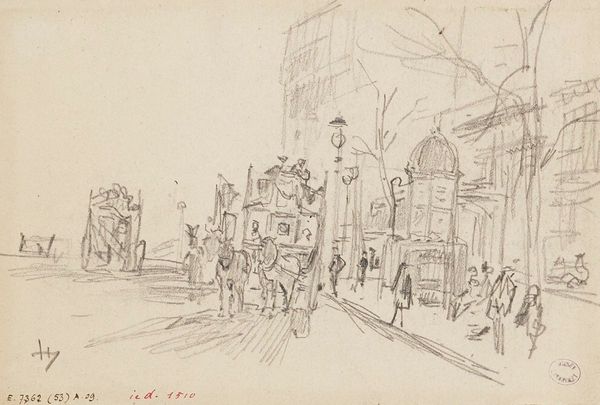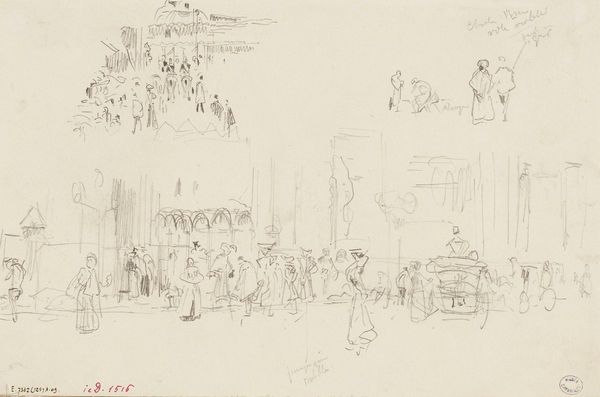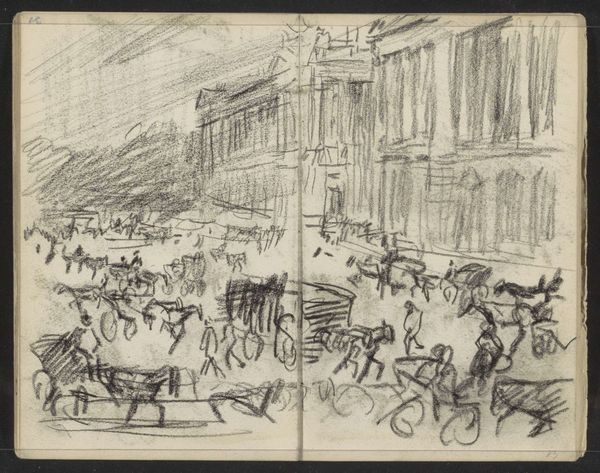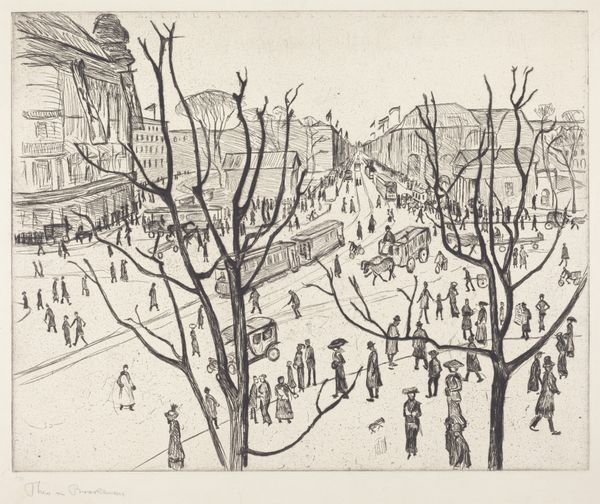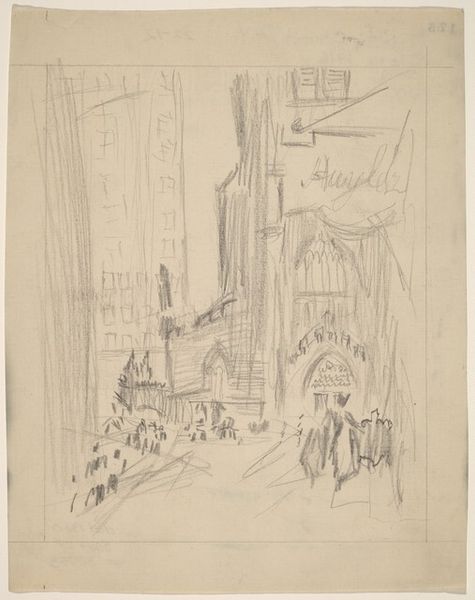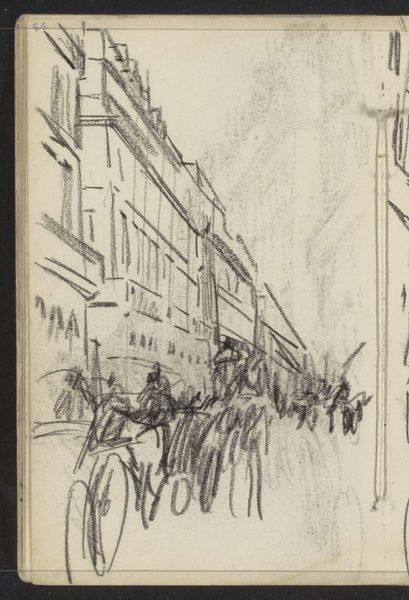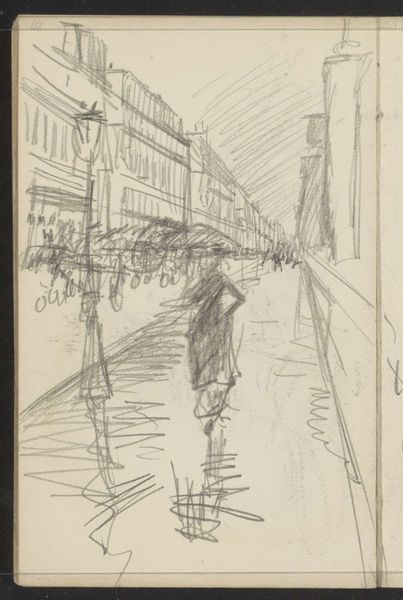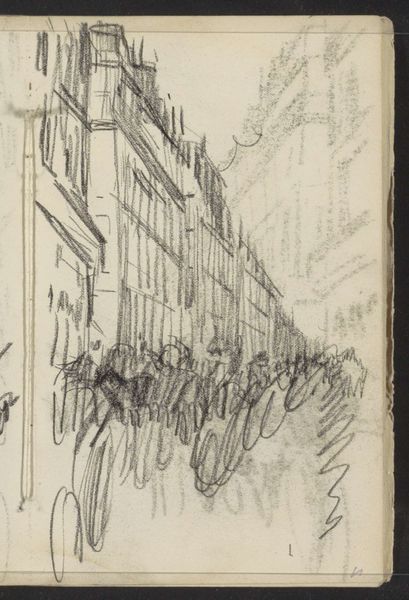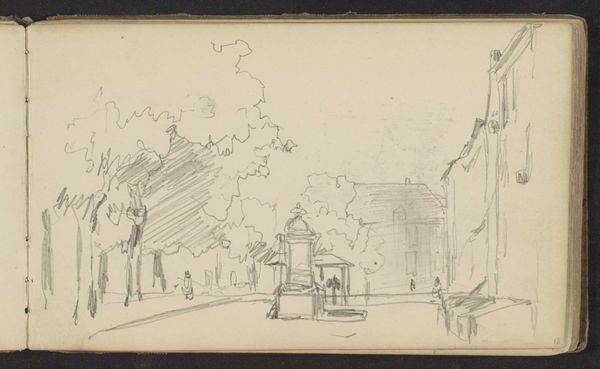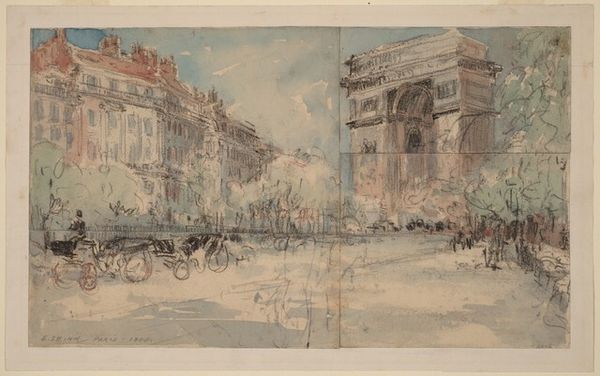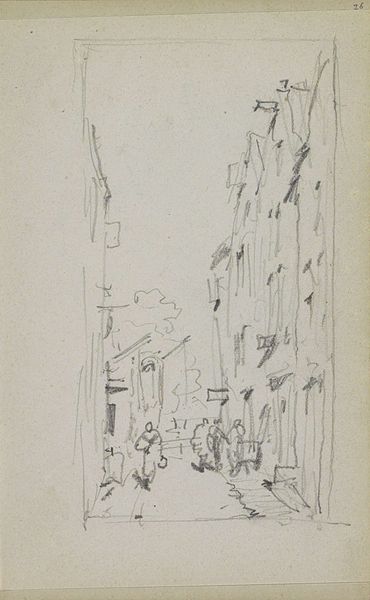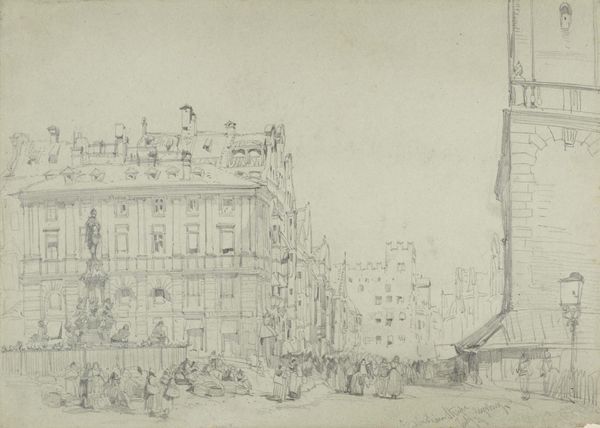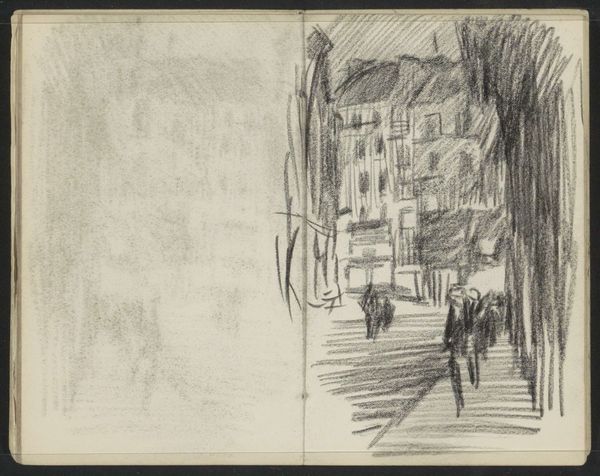
Copyright: Public Domain: Artvee
Curator: This sketch is entitled “Boulevards extérieurs” and dates from sometime between 1895 and 1905. It's a pencil drawing by the French artist Frédéric Houbron. Editor: There’s a stark, ephemeral quality to this piece. It’s as if a moment in time, bustling with figures and architectural forms, is about to fade back into the blankness from which it emerged. Curator: The immediate appeal lies in the rhythmic lines which carve out space. The repeated verticals and horizontals of the market stalls create a rigid structure, a deliberate counterpoint to the more freely drawn figures that populate the scene. We can almost analyze the movement of the crowd through these formal oppositions. Editor: I find the way the artist uses empty space around the figures very powerful. Each figure seems isolated, a silhouette, and it makes me wonder about the isolation of individuals within the broader societal structures—suggested here by the uniformity of the market stalls and building facades. Even though these lines depict what looks like a lively urban street, they evoke feelings of estrangement, you know? Curator: Your point is well-taken and aligns with the artistic temperament of its period. There is a purposeful lack of distinct details that allows for greater abstraction and interpretation. I feel the medium too adds to its transient atmosphere: pencil offers little depth, it does not create hard borders. So shapes arise briefly from the backdrop of paper, only to blur and merge once more. Editor: The symbolic function of such reduction creates this sensation, definitely. Look at the way the artist refrains from establishing faces and, by extension, identities. Each figure is reduced to a long coat. Everyone blends into everyone else. It points to an experience of modernity and life in the city where individuality is paradoxically subsumed by the whole. Curator: What is brilliant is how much can be rendered with so few marks, even in its unfinished quality. It has allowed us to see so much, to read a lot. Editor: Precisely! We found a powerful narrative emerge from this very delicate medium, despite it, or rather because, of its apparent incompleteness.
Comments
No comments
Be the first to comment and join the conversation on the ultimate creative platform.
